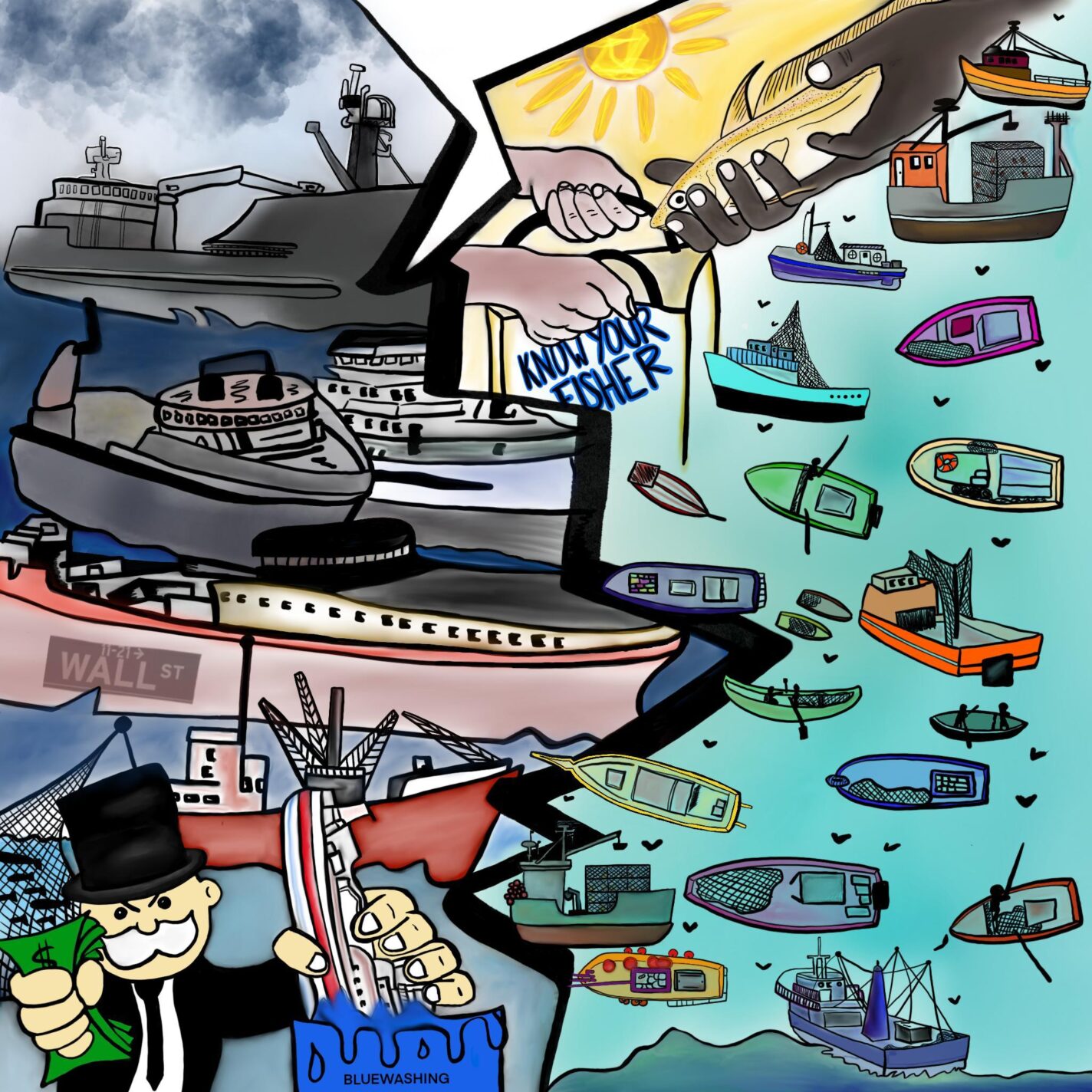Myth: US wild-caught fisheries are fundamentally unsustainable and have no future. That’s why we import so much seafood. To fix our trade deficit and eat more domestic seafood we need more industrial aquaculture and factory fish farms.
Reality: The true danger to our ocean and food system is corporate consolidation, NOT Wild Fisheries
The narrative that wild fisheries are dead is propaganda put on by the industry and big environmental NGOs like the Seafood Nutrition Partnership to make us feel scarcity about the future and make us believe that we spend on them instead of on the fishing communities that have been harvesting fish and feeding communities for centuries. They say we need to produce more fish in the U.S. to compete at a global level, but we now know there is more than enough fish being caught but still no fair prices for small fishers.
If you look at the seafood section of any supermarket in the U.S., about 80-90% of what you see is imported, and more than half of that comes from aquaculture. Even in once-active fishing communities, local, wild seafood has become less available because community fishers keep getting pushed out by their corporate competitors.
Often, community fishers get blamed for global trade trends when in actuality they are catching enough seafood to feed the nation but are forced to export instead of selling locally. The government could be supporting fishing communities’ control over local and regional supply chains instead of promoting industrial-scale supply chains. We need to move away from activities that destroy local fish stocks like factory fish farms, factory fishing boats, factory oil rigs, factory wind farms, and factory land-based fish farms.
The industry says we will be saved by intensive aquaculture and offshore fin fish farming but at the same time they are pushing for land-based aquaculture and genetically engineered (GE) fish. these so-called “alternatives” to ocean fish farming show us how the industry readily acknowledges that industrial activities deplete the ocean.
Companies investing in false solutions like GE fish claim they can safely contain these fish in land-based aquaculture facilities. this ignores that the water from these facilities is often dumped either intentionally or through human error in local waterways and that it’s only a matter of when, not if, there will be containment breaches of GE fish. Every time a land-based aquaculture facility releases their water waste there is a risk of an invasive species escaping into local waterways. What they call innovation, we see as ecological, economic, and genetic corporatization and privatization of fishing communities and their resources.
Today, lobbyists like Cargill are pushing Congress to sign the AQUAA Act. This bill is proposing something brand new, to bring industrial aquaculture to federal waters. A bill like this is designed to perpetuate a history of irresponsible policy making where industry expands without any consideration, consent, or accountability to the Indigenous peoples and fishing communities. The industry has billions of dollars invested in intentionally feeding false narratives about the root of the problem to the public.
The U.S. harvests enough seafood to feed the population nationwide. Industrial-scale fishing is part of a larger model of industrial-scale production that we know is not good for the environment or the ocean. To feed ourselves better and address the trade deficit, we should ignore factory fish farms and instead focus on enhancing robust local and regional food supply chains that prioritize values based aquaculture and supports the distribution of local wild seafood to communities across the country.
The true danger to our ocean and food system is corporate consolidation, not Wild fisheries.
Missed Part 1? Check it out!

